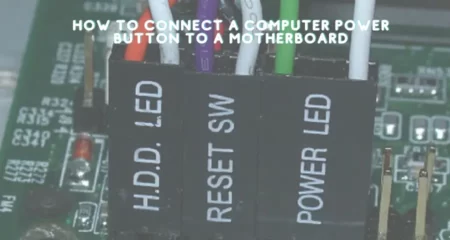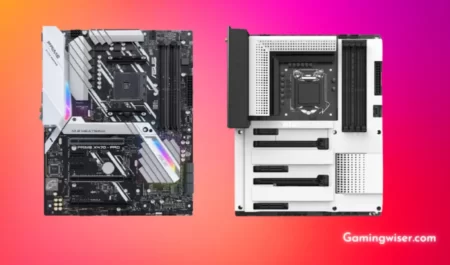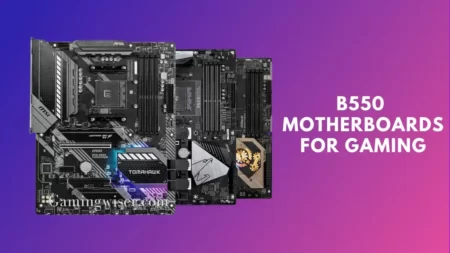Do you feel that your CPU is heating up faster than it should? Thermal Paste is one of the main factors that can affect CPU temperature. Thermal Paste is a material applied to the top of a CPU to improve heat transfer between the CPU and the heatsink.
Over time, this Paste can become dirty and less effective at transferring heat. If you are experiencing higher than average CPU temperatures, then it is likely that your thermal Paste needs to be replaced.
Before you begin to remove the old Paste – take a moment and think about what Thermal Paste you’ll apply. Can I use something other than Thermal Paste? No? If yes, what do you recommend?
What Thermal Paste should I avoid touching with my fingers at all costs? Thermal Paste is usually non-conductive, but you should keep that in mind before actually touching it with your bare hands.
This article will show you how to clean thermal Paste off your CPU.
Quick hint: If you want to know how to clean Thermal Paste without removing the heatsink and apply Thermal Paste properly, scroll down below, and we’ll teach you all we know about Thermal pastes and how to use them.
Let’s begin with Thermal Paste basics. What Thermal Paste should I use and Steps to clean Thermal Paste off CPU without alcohol.
What is thermal Paste made?

Thermal Paste is made of a material applied to the top of a CPU to improve heat transfer between the CPU and the heatsink. Thermal Paste usually contains a silicone compound, metal particles, and an organic compound.
The primary purpose of thermal Paste is to fill in any gaps between the CPU and heatsink to improve heat transfer. Thermal Paste can also help to prevent thermal throttling.
Thermal Paste is a heat conductor, meaning that it can help move heat away from the CPU and towards the heatsink. The metal particles in thermal paste help create a better contact surface between the CPU and heatsink, while the silicone compound helps to reduce any air gaps. The organic compound helps to reduce the chance of corrosion.
How does Thermal paste work?
Thermal Paste works by filling the air spaces between the heat sink and the CPU – effectively allowing a thin layer of heatsink to be spread over the CPU. Thermal Paste has low thermal conductivity to prevent a short circuit.
Thermal Paste is manufactured in different ways, including: “silver paint” method, “grease” method, and the most popular – “thermal compound” method, Thermal Compound is usually best for heat transfer from CPU to heatsink, but it may require a little more time to prepare Thermal Paste correctly.
Thermal compounds have tiny metal particles suspended in combination to act as heat conductors.
How to remove Thermal Paste
Removing Thermal Paste is a pretty simple process, but it can be messy. Here are the steps that you will need to follow:
- Power down your computer and unplug all of the cables.
- Remove the side panel of your computer case.
- Locate the CPU and the heatsink.
- Remove the screws that hold the heatsink in place.
- Gently remove the heatsink from the CPU.
- Look for the Thermal Paste that is on top of the CPU.
- Carefully scrape off the Thermal Paste.
- Clean the Thermal Paste off of the CPU.
- Apply Thermal Paste, if necessary.
- Reattach the heatsink to the CPU and fasten it in place with screws
- Put the computer case back together and start up your computer to see any improvement in temperature or noise levels.
How to clean thermal paste off CPU without alcohol.

Thermal paste is a heat conductor, meaning that it can help move heat away from the CPU and towards the heatsink.
The metal particles in thermal paste help create a better contact surface between the CPU and heatsink, while the silicone compound helps to reduce any air gaps.
If Thermal Paste is applied too thickly, it will not be able to transfer heat efficiently, and if it is used too thinly, it will not be able to fill in the air gaps.
There are various methods to clean the thermal paste off the CPU without alcohol. Below is some method that you can clean Thermal Paste without alcohol.
Method 1: Steps to clean Thermal paste off CPU without alcohol.
- Turn off the computer, unplug all cables, and open up the case.
- Find your Thermal Paste that is on top of the CPU.
- Use a flat-head screwdriver to gently scrape off Thermal Paste from the CPU; just be careful not to scratch or damage any components or PCB traces on the motherboard.
- Use a lint-free cloth to wipe Thermal Paste off CPU until Thermal Paste is wholly removed.
- If Thermal Paste is not thoroughly cleaned off, repeat Steps 3 and 4.
- Use a Thermal Paste Application Kit to apply new Thermal Paste; see picture below.
- Reattach the heatsink to the CPU and fasten it in place with screws, then put the computer case back together and start up your computer.
Tools you need: A flat-head screwdriver and a Thermal Paste Application Kit.
Method 2: Remove the Paste with Nail Polish Remover.
Thermal paste is a dense material applied to the top of a CPU processor to help with heat dissipation. Over time, this paste will accumulate dirt and dust, leading to a decline in the processor’s performance.
If you want to clean thermal paste off your CPU, you don’t need to use alcohol. You can use a common household item like nail polish remover.
Nail polish remover is a solvent that will help break down the thermal paste and remove it from the processor. To clean your CPU using this method:
- Disconnect or Turn off your computer from any power sources.
- Locate the CPU fan.
- Turn your computer upside down and place it on a soft cloth to protect the fan from damage.
- Apply a small amount of nail polish remover around the edges of the CPU and let it sit for about 10 minutes.
- Use an old toothbrush or any other brush with stiff bristles to scrub away the thermal paste gently.
- Wipe the CPU clean with a soft cloth.
- Reconnect your computer to a power source and turn it on.
Warnings:
If, for whatever reason, you don’t want to use rubbing alcohol or nail polish remover, there is another way to clean your CPU.
You can use a little bit of hot water and a soft cloth to wipe away the thermal paste from your CPU. Just heat some water and then use the fabric to get rid of the thermal paste.
Method 3: Clean Thermal Paste off CPU with Hot Water (no Alcohol)
Another way to clean the thermal paste off your CPU is by Hot Water . Using Hot Water it helps to break down the thermal paste and remove it from the processor.
Isopropyl alcohol (rubbing alcohol), acetone (nail polish remover), or similar solvents effectively remove the thermal paste, but you must be cautious when using them.
If the isopropyl alcohol or acetone is heated, they become more volatile and can damage components of your computer.
If you do not want to use such solvents, there is an alternative way – you can clean your CPU by using hot water only. Heat some water, and then wipe the thermal paste off your CPU with a soft cloth.
Whichever method you choose, be sure to follow the same basic steps: Disconnect your computer from any power sources, locate the CPU fan.
Turn your computer upside down and place it on a soft cloth to protect the fan from damage. Apply a small amount of the cleaning agent around the edges of the CPU.
Let it sit for about 10 minutes, and use a brush with stiff bristles to scrub away the thermal paste. Finally, wipe the CPU clean with a soft cloth.
When you clean your CPU, reconnect your computer to a power source and turn it on. Your computer should now be running more excellent and more efficiently.
Also read: What are Front Panel Connectors?
Can Thermal Paste Dry Out?
Yes, Thermal Paste can dry out; Thermal Paste is a non-conductive compound designed to fill in any air gaps between the CPU and the heatsink.
If Thermal Paste dries out, then you will have more of a chance of experiencing thermal throttling, or your machine might shut down unexpectedly due to high temperatures.
Another reason why Thermal Paste might dry out is if the compound is not applied correctly. It should spread thermal Paste in a thin layer over the surface of the CPU, and it should not be too thick or too thin.
If Thermal Paste is applied too thickly, it will not be able to transfer heat efficiently, and if it is used too thinly, it will not be able to fill in the air gaps.
You should not apply thermal Paste like this!
Thermal Paste is a heat conductor, meaning that it can help move heat away from the CPU and towards the heatsink.
The metal particles in thermal paste help create a better contact surface between the CPU and heatsink, while the silicone compound helps to reduce any air gaps.
Thermal Paste will only work if it is applied correctly! It should spread zero Thermal Paste in a thin layer over the CPU, and it should not be too thick or too thin.
New Thermal Grease has higher Thermal Conductivity than Thermal Paste!!!
Yes, New Thermal Grease (like Thermal Grizzly Kryonaut) has a Thermal Conductivity of 12.5 W/mk compared to Thermal Paste which only has a Thermal Conductivity of 2.0W/MK.
However, Thermal Paste is a cheaper option, and it comes in a tub, making it easier to apply on the CPU or heatsink. Thermal Paste is also more flexible, filling any air gaps between the CPU and heatsink.
Thermal Paste is also easier to clean off than Thermal Grease, and Thermal Grease tends to dry out faster than Thermal Paste.
How do I remove Thermal Paste from my CPU?
Thermal paste is a heat conductor, meaning that it can help to move heat away from the CPU and towards the heatsink.
The metal particles in thermal paste help to create a better contact surface between the CPU and heatsink, while the silicone compound helps to reduce any air gaps.
Thermal Paste will only work if it is applied correctly! Thermal paste should be spread in a thin layer over the surface of the CPU..
How to Clean Thermal Paste Off CPU?
The most common way to clean Thermal Paste off a CPU is by using a cotton swab and some isopropyl alcohol. Be sure to avoid touching the Thermal Paste with your fingers, as this can cause contamination.
If the Thermal Paste is particularly stubborn and difficult to remove, you may need to use a knife or a screwdriver to scrape it off.
Be very careful not to damage the CPU when scrapping Thermal Paste off.
Also read: Why Motherboard Is Important? [Complete Details]
Conclusion:
You do not need to use isopropyl alcohol, acetone, or other solvents. If you misuse those solvents, they can damage your computer.
Using hot water and a soft cloth will remove the thermal paste from the CPU and fix issues with heat dissipation. You can heat some water in a microwave oven or over a campfire and use it to clean the thermal paste from your CPU.
Frequently Asked Questions
Will using isopropyl alcohol damage my CPU?
No, isopropyl alcohol will not damage your CPU or other components if used with caution
I read that using alcohol will damage my CPU. Is this true?
No, this is not true. While it is true that using alcohol can potentially damage your CPU if misused, using water will have the same negative effect. The key is to use a gentle, circular motion when cleaning with either substance.
Can I use water to clean thermal paste?
Yes, you can use water to clean thermal paste; however, it is essential to note that using too much pressure can damage your CPU.
I accidentally cleaned my heatsink with alcohol. What should I do?
No need to worry! If you make a mistake and use alcohol on your heatsink, the only negative effect is that you will need to reapply thermal paste. However, it is important to note that you could damage your CPU if you use too much pressure when cleaning with alcohol.
What if you put too much thermal paste?
If you put too much thermal paste on your CPU, it will make it difficult to clean off later. In this case, you can try using a cotton swab dipped in isopropyl alcohol to remove the excess.
What if the thermal paste is old and dried up?
If the thermal paste on your CPU is old and dried up, you can try gently heating it with a hairdryer to loosen it up before cleaning. Be sure to allow your CPU to cool completely before applying a new thermal paste.
What if I accidentally spill alcohol on my motherboard?
If you accidentally spill alcohol on your motherboard, it is important to immediately shut down your computer and disconnect it from the power supply. Once the motherboard has dried, you can try powering it on your computer again. If it does not turn on, you can try replacing the fuse on your motherboard.


![Why Motherboard Is Important? [Complete Details]](https://gamingwiser.com/wp-content/uploads/2021/11/Why-Motherboard-Is-Important-450x235.webp)







